Search results27 results
COLLECTION
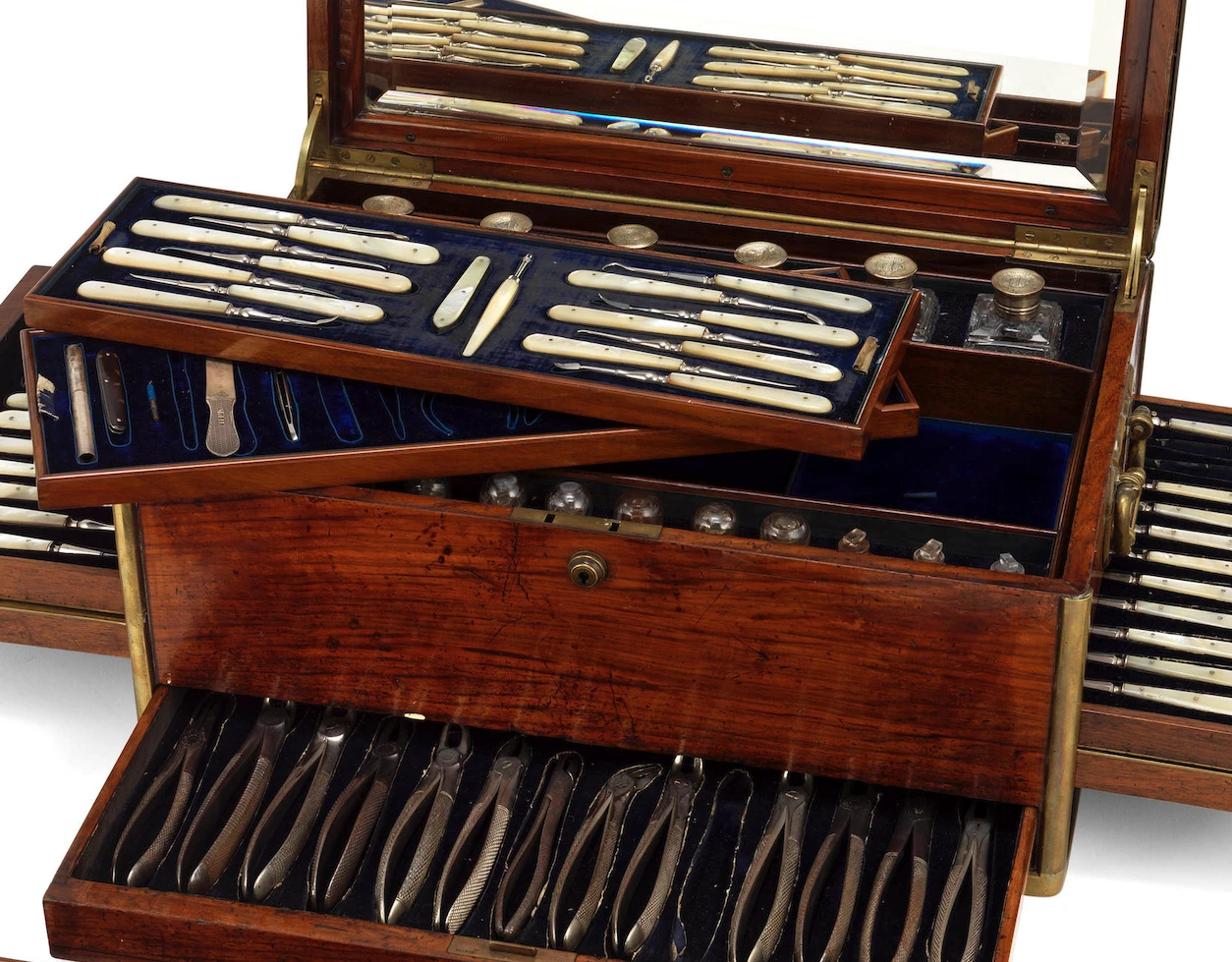
England, 19 C. 2 half
A fine presentation Dentistry and Surgical Chest, English, late 19th century is contained in the walnut brass-bound case, with an engraved brass plaque on the lid with a leopard coat of arms inscribed LABOR OMNIA VINCIT, C.I.H. ("Work conquers all"), with four Bramah locks and associated key for the lid and the front and side compartments. The compartments (three with beveled mirrors), fitted with blue velvet covering lodgements for instruments, contain cut-glass bottles with glass stopper and hinged metal cap bearing the same motto, a Claudius Ash & Sons booklet with dental tin foil leaves, dental and surgical instruments with mother-of-pearl (nacre) or tortoiseshell handles, some with decorative carved mother-of-pearl handles. The instruments are marked: SAVIGNY & CO, LONDON; MAW SON & THOMPSON, SWS, and SMALE. Property from a private collection, acquired in the mid-20th century. By repute commissioned and used by a dental surgeon aboard an early Transatlantic luxury liner.
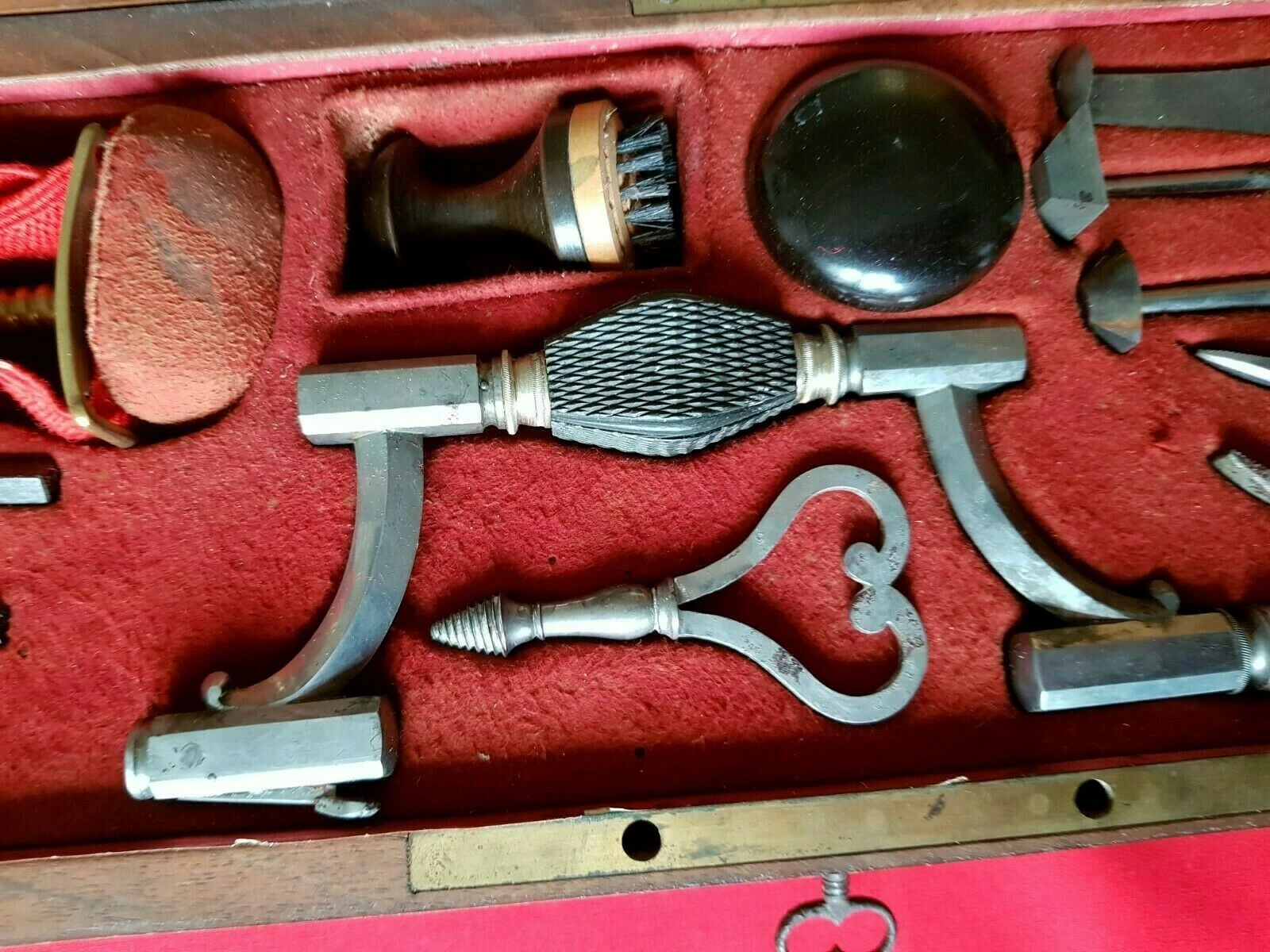
France, 19 C. 1 half
The rare French amputation kit, early 19 century, contains the typical instruments of a trauma and military surgeon, such as brace and bit cranial trephine, elevators and rugines, amputation saw, brush to clean the operative field. The case has two compartments, has original key.
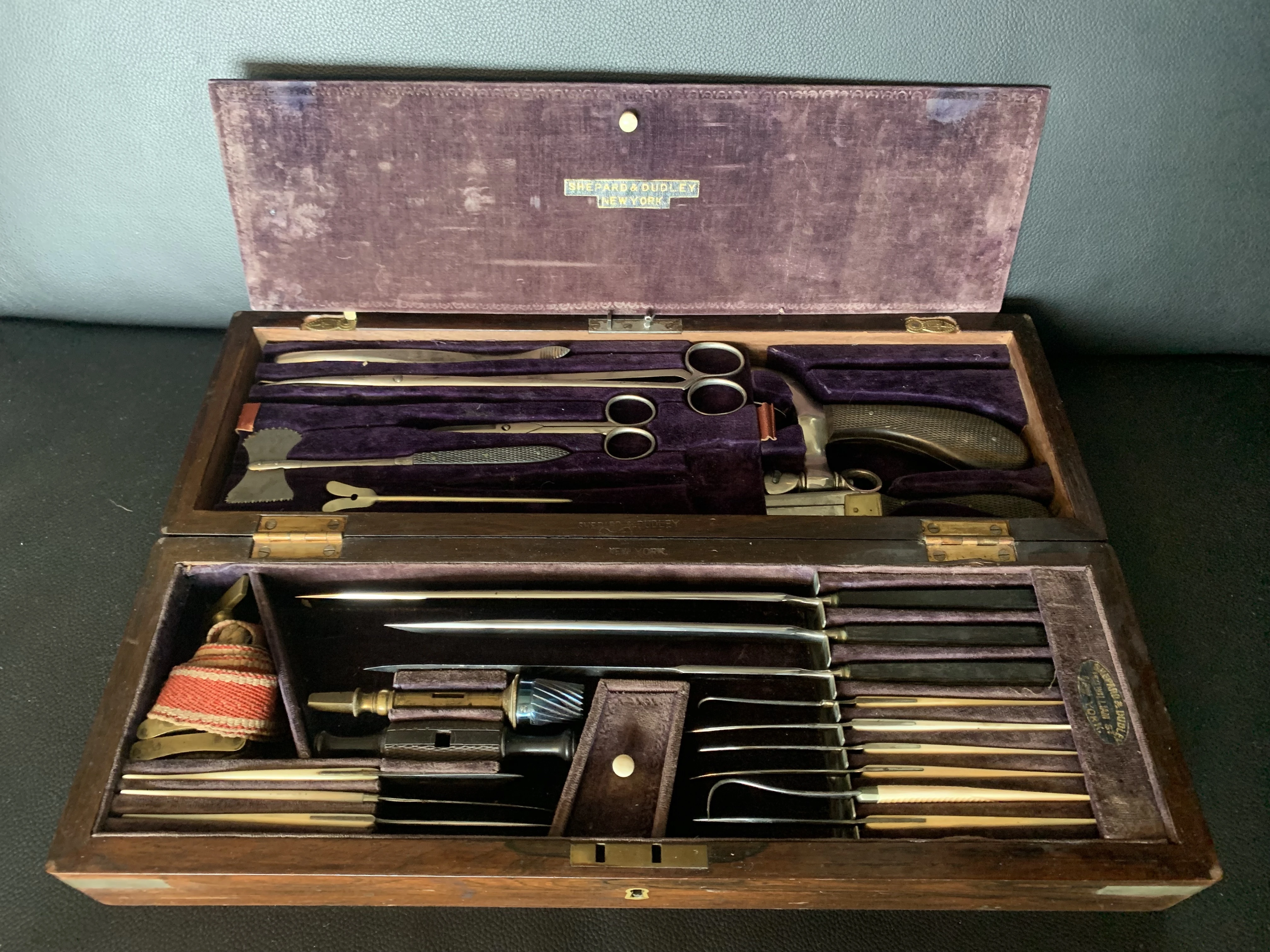
USA, 19 C. 2 half
American Amputation and trepanation cased set, by Shepard & Dudley NY, late XIX century. The wooden case contains the typical instruments of a trauma surgeon, such as amputation saw, trephine head with handle, screw tourniquet. The amputation saw and three amputation knives have ebony handles, the rest hand instruments like scalpels and hook have ivory handles. The case has two compartments lined with violet velvet. On the cover of the upper compartment, the inscription "SHEPARD & DUDLEY * NEW YORK".

Austria, 18 C.
A collection of 65 sets of surgical instruments made by Viennese craftsman Joseph Malliard under the direction of Giovanni Alessandro Brambilla, an Italian-born Austrian surgeon eighteenth-century innovator in military surgery. Today, this collection, known as the “Instrumentarium Chirurgicum Militare Austriacum” is on display at the Josephinum Museum, Vienna
LIBRARY
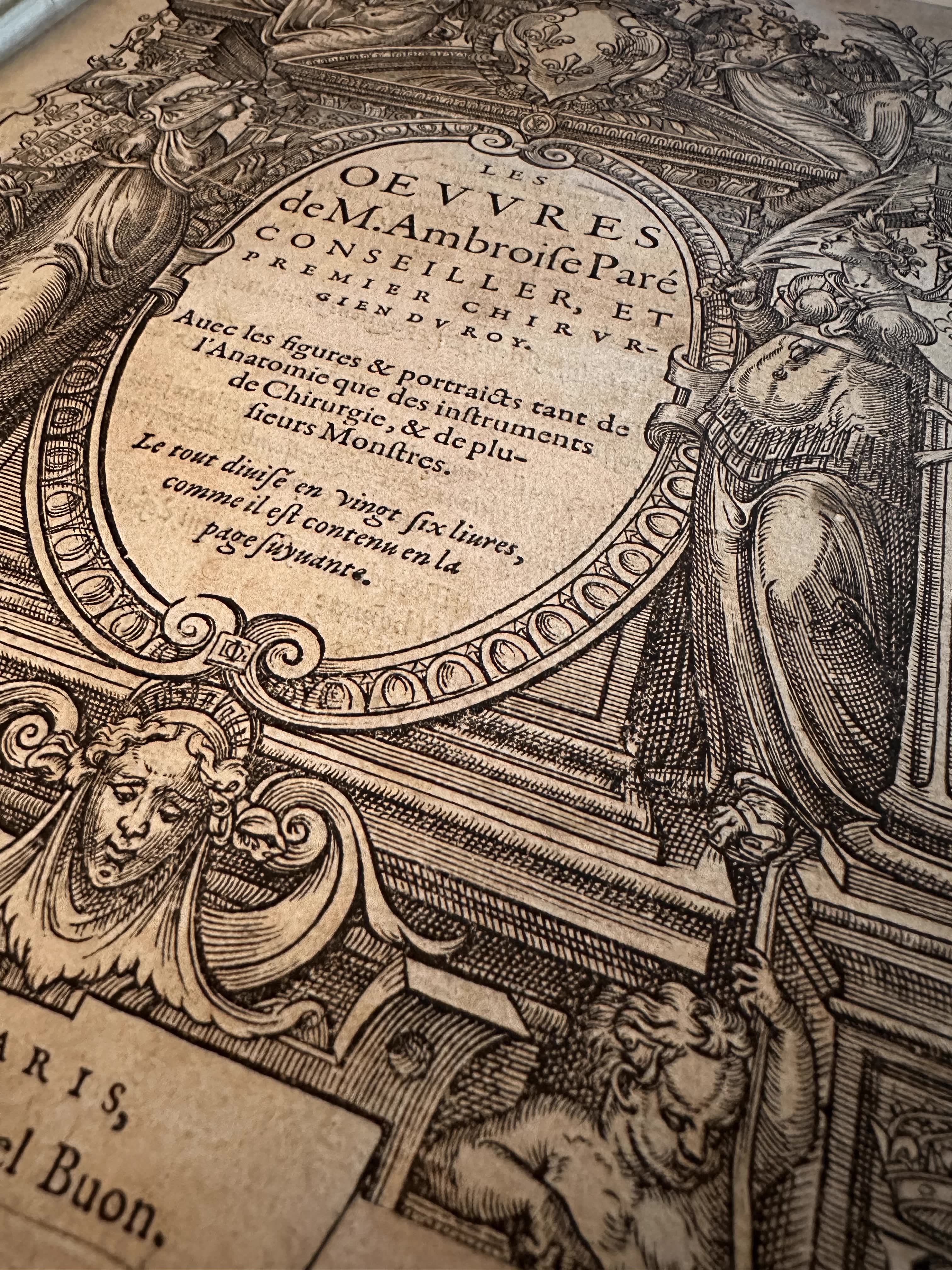
France, 16 C.
Paré, Ambroise
Paré, Ambroise, 1510?-1590. Les Œuvres de M. Ambroise Paré, conseiller et premier chirurgien du Roy. Avec les figures & portraicts tant de l'anatomie que des instruments de chirurgie, & de plusieurs monstres. Le tout divise en vingt six livres (transl. from French: The works of Mr. Ambroise Paré, advisor and first surgeon to the King. With figures & portraits of both anatomy and surgical instruments, & several monsters. The whole is divided into twenty-six books). Paris, Gabriel Buon, 1575, the first edition. This unique book is the cornerstone that laid the foundation for modern surgery in France and the rest of Europe, the most important surgical book of the 16th century.

Germany, 16 C.
Bartisch, Georg
Augen-Dienst: Oder Kurtz und deutlich verfasster Bericht von allen und jeden in- und äusserlichen Mängeln Schäden Gebrechen und Zufällen der Augen (Eye Service: or report of all and every internal and external defects, damages, infirmities, and accidents of the eyes), Author: Georg Bartisch, Publisher: Georg Scheurer, Nuremberg, 1686
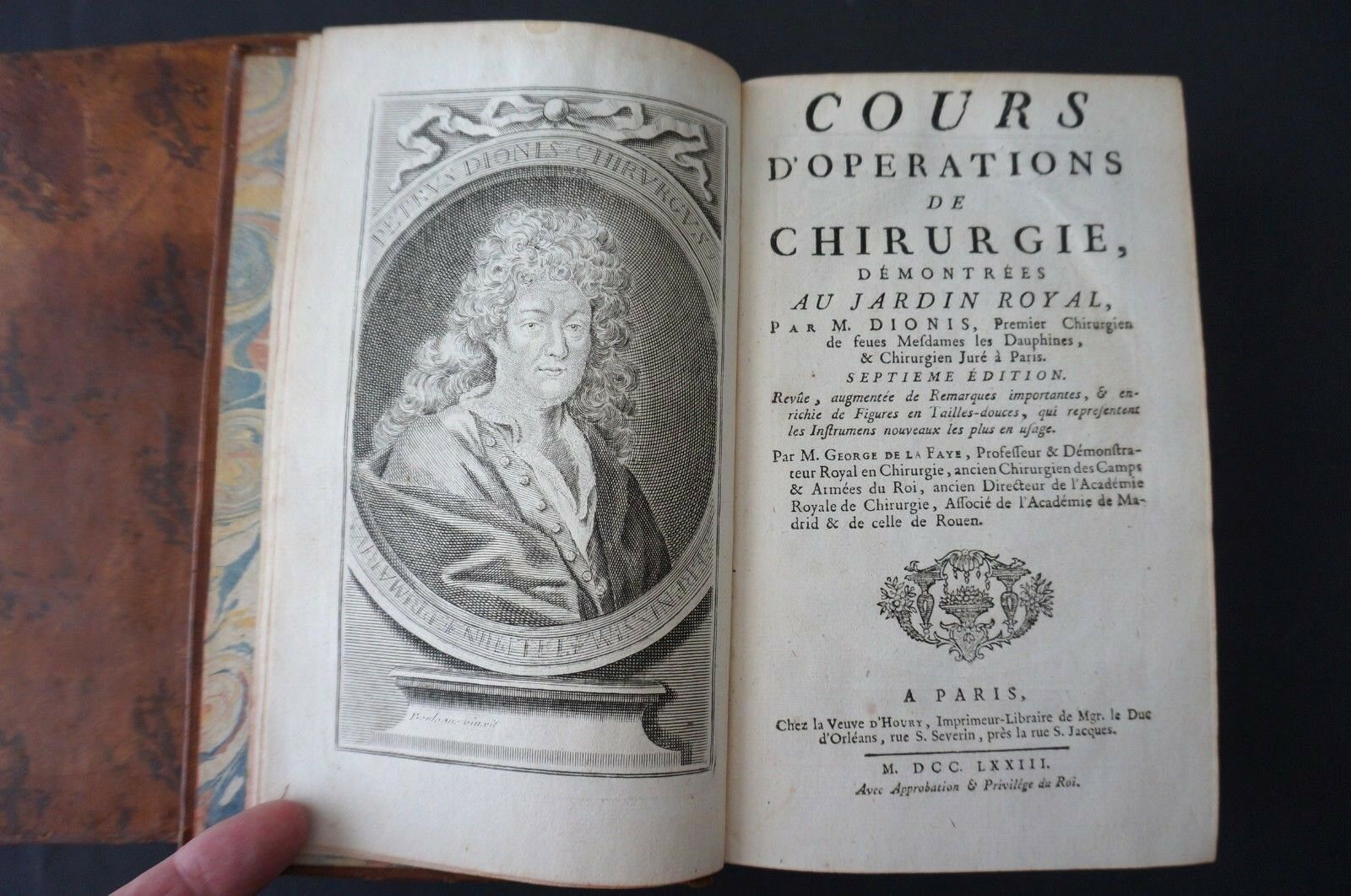
France, 18 C.
La Faye, Georg de
Cours d'opérations de chirurgie démontrées au Jardin Royal par M Dionis, Premier chirurgien de feues Mesdames les Dauphines et chirurgien Juré à Paris, en dix démonstrations (Course of surgical operations demonstrated at the Royal Garden by M Dionis, First surgeon to the late Mesdames les Dauphines and Sworn surgeon in Paris, in ten demonstrations). Published by the widow of Houry, printer and bookseller to Mgr le Duc d'Orléans, rue St Séverin, near rue St Jacques. Paris, 1773. Two volumes. A classic work on surgery, reprinted several times throughout the 18th century. Dionis' lessons cover the whole of operative medicine in ten demonstrations, from the lower abdomen to the head and eyes. Additional remarks by La Faye present discoveries made since the first edition, published in 1707.
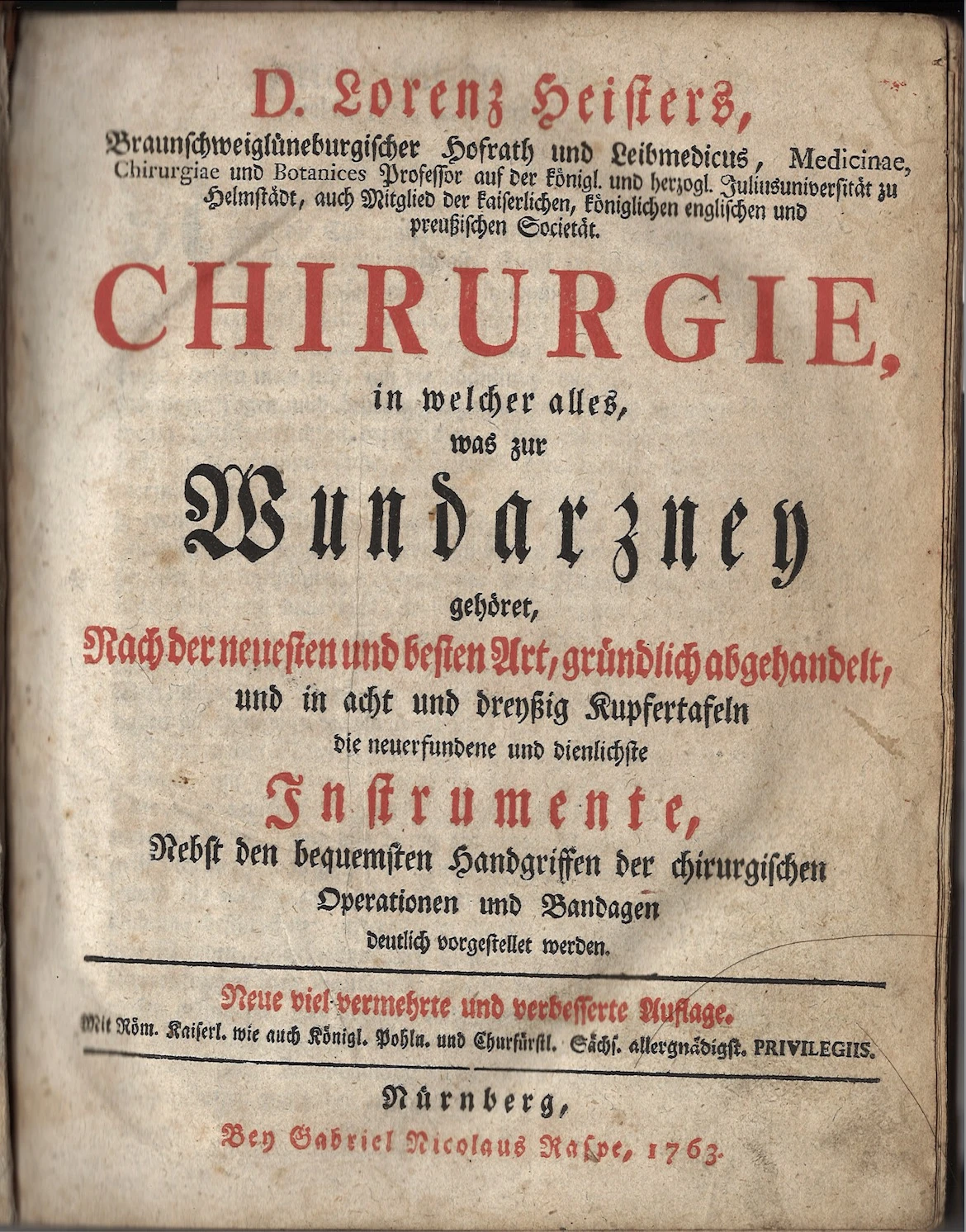
Germany, 18 C.
Heister, Lorenz
Lorenz Heister (1683-1758). Chirurgie, in welcher alles, was zur Wundarzney gehöret, nach der neuesten und besten Art, gründlich abgehandelt... ("Surgery, in which everything that belongs to the surgical procedure is thoroughly dealt with in the latest and best way..."). 16+1078+24 pages, 38 engravings. Publisher: Gabriel Nicolaus Raspe, Nuremberg, 1763.
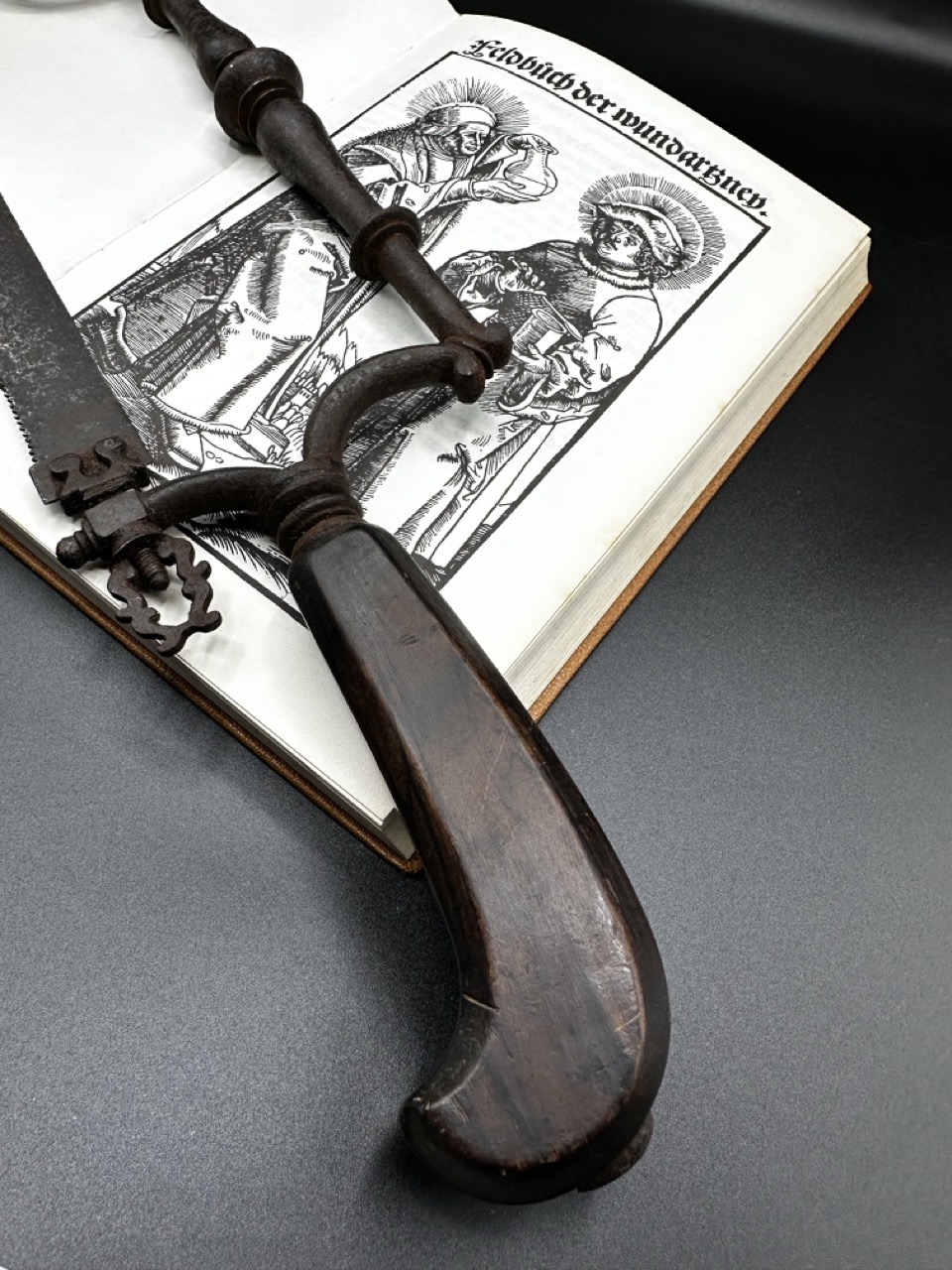
Germany, 16 C.
Gersdorff, Hans von
Hans von Gersdorff (ca. 1455-1529), Feldtbuch der Wundtartzney (German: "Field Book of Wound Medicine).
PEOPLE
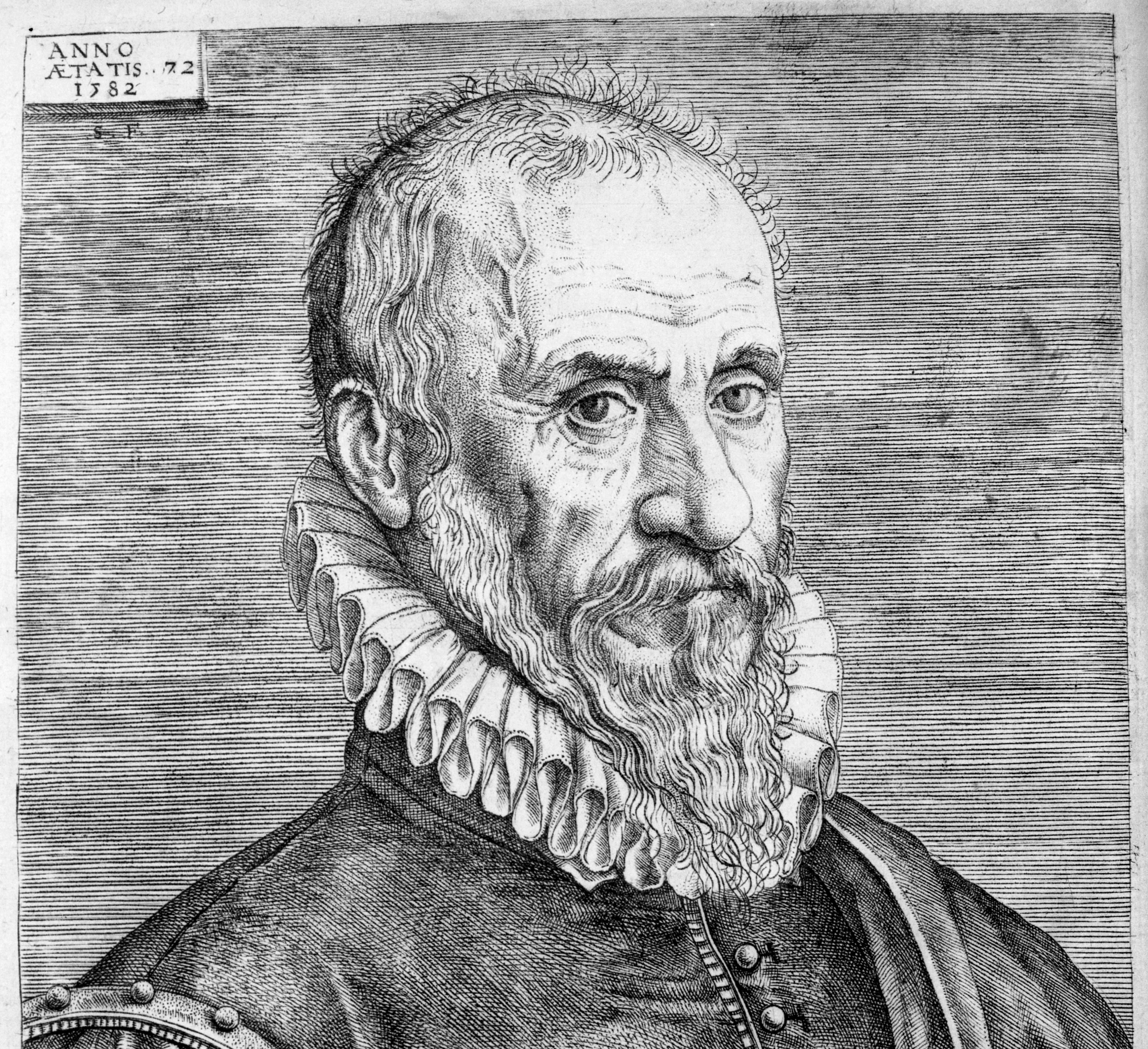
Ambroise Paré (1510-1590), considered to be 'père de la chirurgie française' (father of French surgery), royal surgeon to four kings. Born in the French province, he revolutionised surgical practice despite having developed only a few entirely original methods. Paré's status as the ‘father of French surgery’ is not due to individual inventions, but primarily to the fact that, thanks to royal support, his voice could not be ignored. His revolutionary methodology for the time included empirical observation (instead of reading the classics), challenging dogma (rather than commenting on ancient authors), democratising knowledge (books in vernacular French rather than scholarly Latin) — thanks to his numerous widely circulated publications richly illustrated, his ideas and concepts found their target audience and drowned out the opinions of conservative opponents, while the status of surgeons was raised from that of modest craftsmen to the noble authority of university medicine.
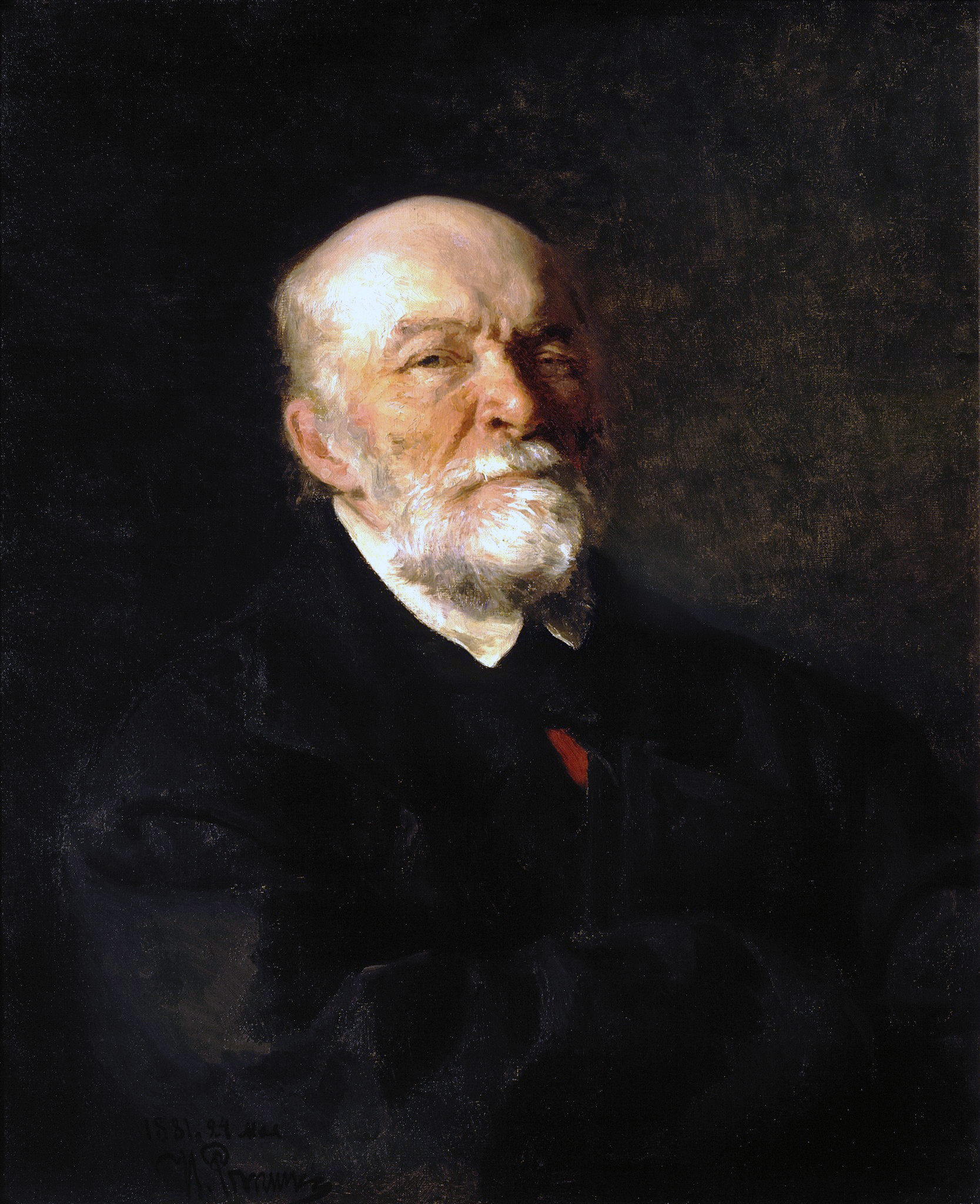
Nikolay Ivanovich Pirogov (Russian: Николай Иванович Пирогов; 25.11.1810 – 5.12.1881) was a renowned Russian surgeon, "The father of Russian field surgery" and "The father of Russian topography anatomy", scientist, professor of surgery, publicist and author. Pirogov promoted surgical anaesthesia in Russian Empire, was the first who describe some negative effects and possible complications of general anaesthesia. He was one of the first in the world introducing ether anaesthesia on the battlefield.
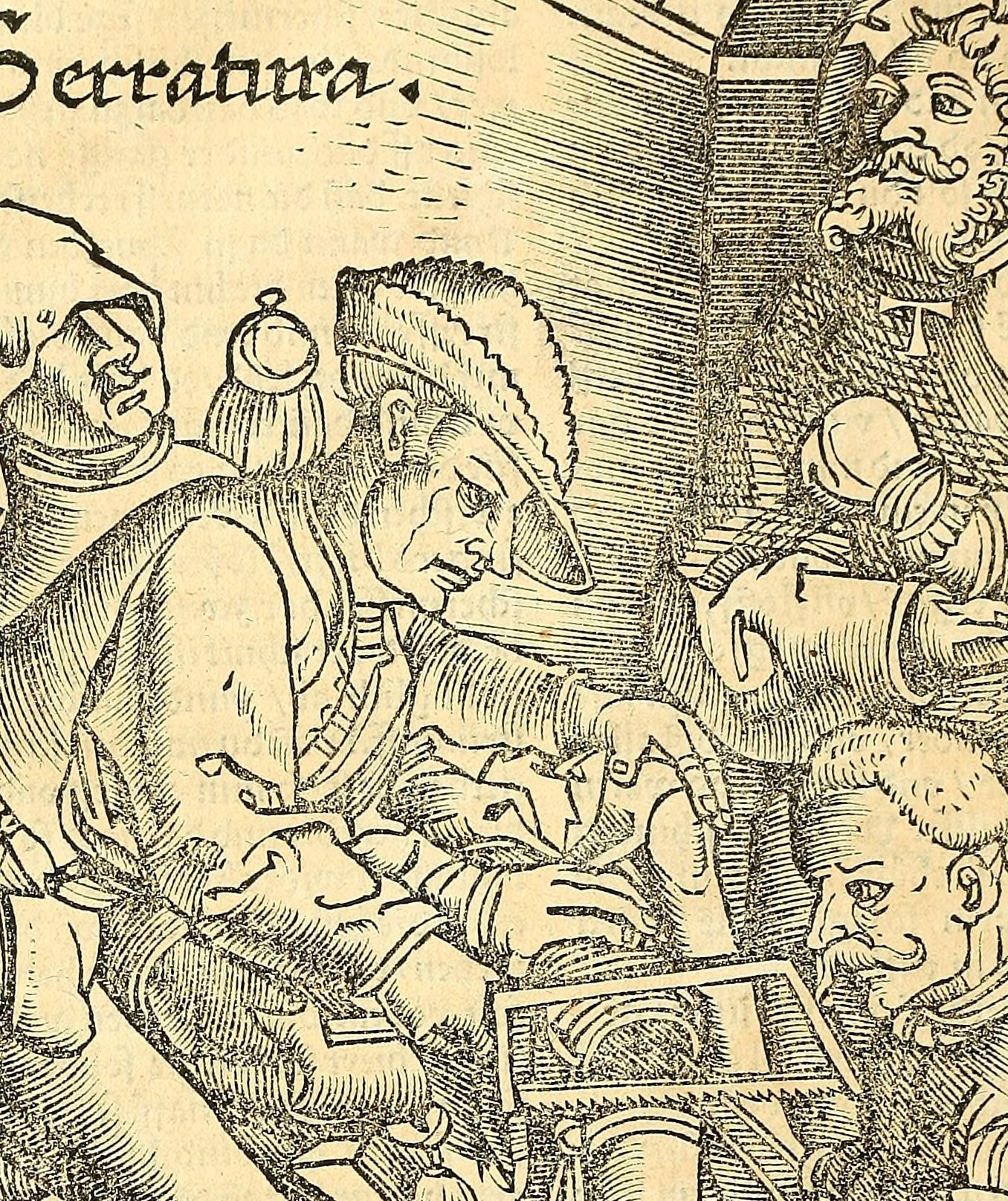
Hans von Gersdorff (1455-1529) was a German surgeon and medical writer who lived during the 15th and early 16th centuries. He is best known for his military surgical experience and his influential medical manual, the Feldtbuch der Wundarzney (Field Book of Wound Medicine), which became one of the most widely used surgical textbooks in medieval Europe. His work played a crucial role in shaping the field of surgery, particularly in the treatment of battlefield injuries, amputations, and wound care.
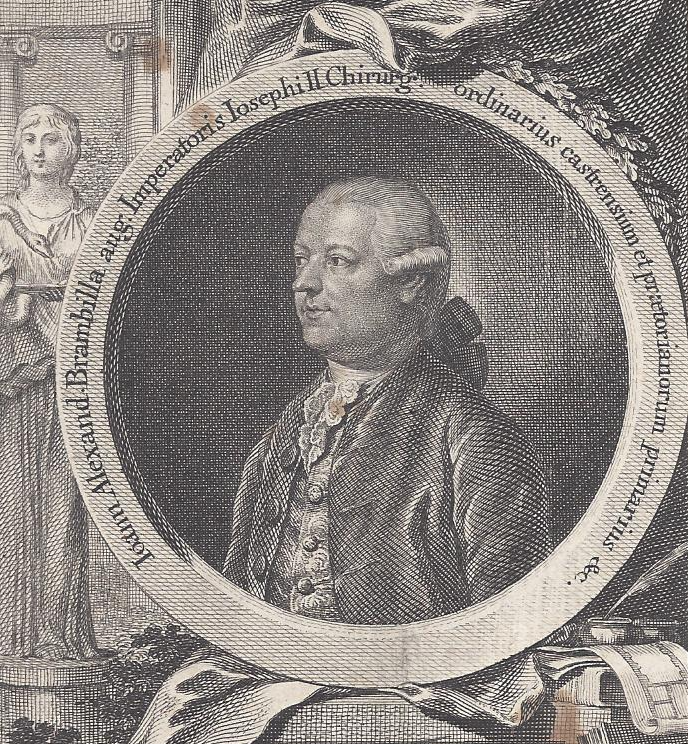
Giovanni Alessandro Brambilla, Baron di Carpiano(San Zenone al Po, April 15, 1728 – Padua, July 30, 1800, was a great Italian and Austrian surgeon, Court Surgeon of the Emperor Joseph II, founder and the first director of the Military Medicine-Surgical Academy Josephinum, Vienna, Austria
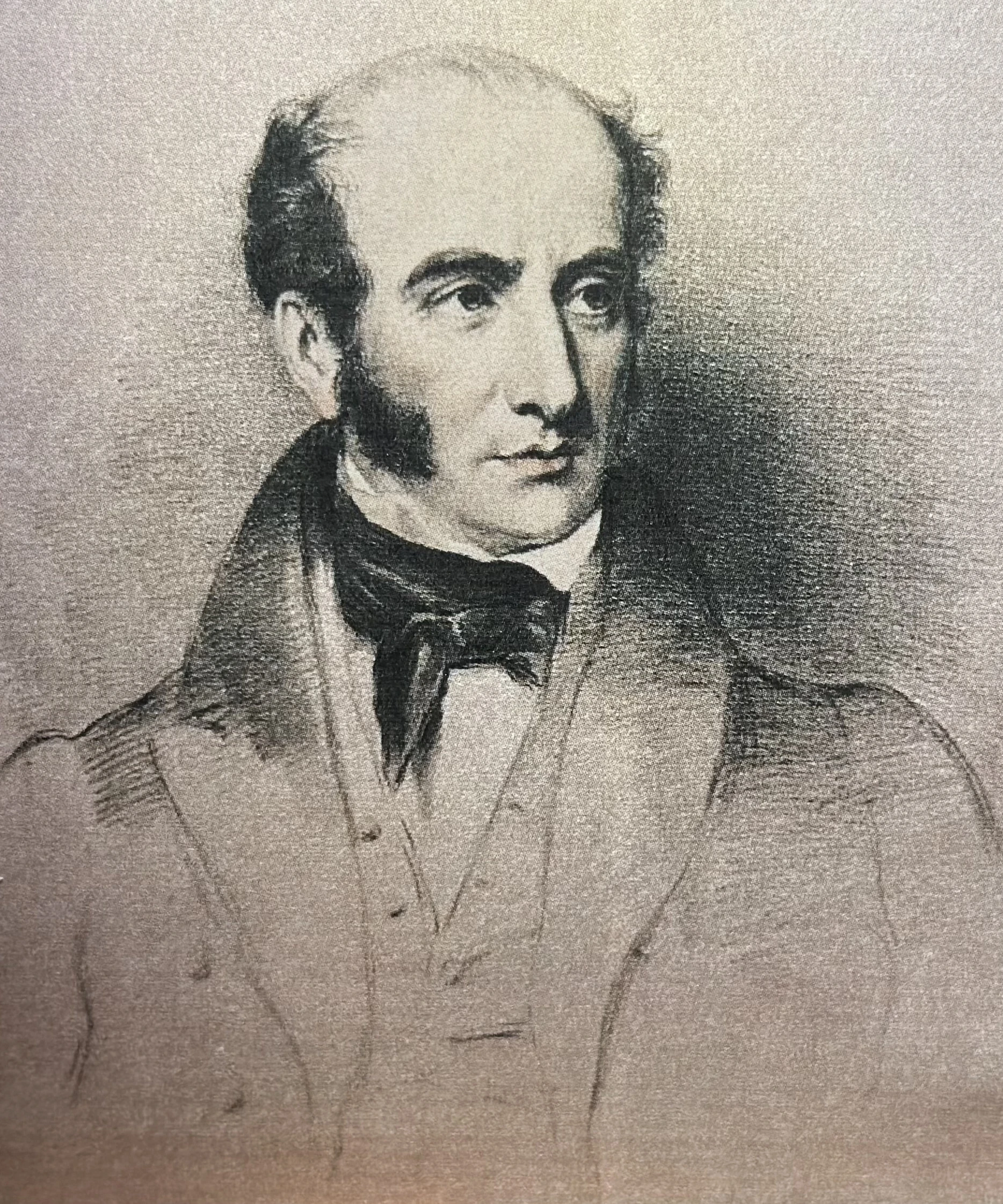
Joseph-Frédéric-Benoît Charrière. Famous medical instruments manufacturer and inventor, Charrière was born 19th of March 1803, in Cerniat, canton of Fribourg, Switzerland. Charrière would emerge as a pivotal figure in the realm of surgical instrumentation of the early 19th century, leaving a legacy that transcends time and continues to influence modern medicine. He is known as an inventor of "French gauge", manufacturer numerous innovative instruments. A number of distinguished European instrument makers were his apprentices.
Joseph-Frédéric-Benoît Charrière. Famous medical instruments manufacturer and inventor, Charrière was born 19th of March 1803, in Cerniat, canton of Fribourg, Switzerland. Charrière would emerge as a pivotal figure in the realm of surgical instrumentation of the early 19th century, leaving a legacy that transcends time and continues to influence modern medicine. He is known as an inventor of "French gauge", manufacturer numerous innovative instruments. A number of distinguished European instrument makers were his apprentices.
FIRM
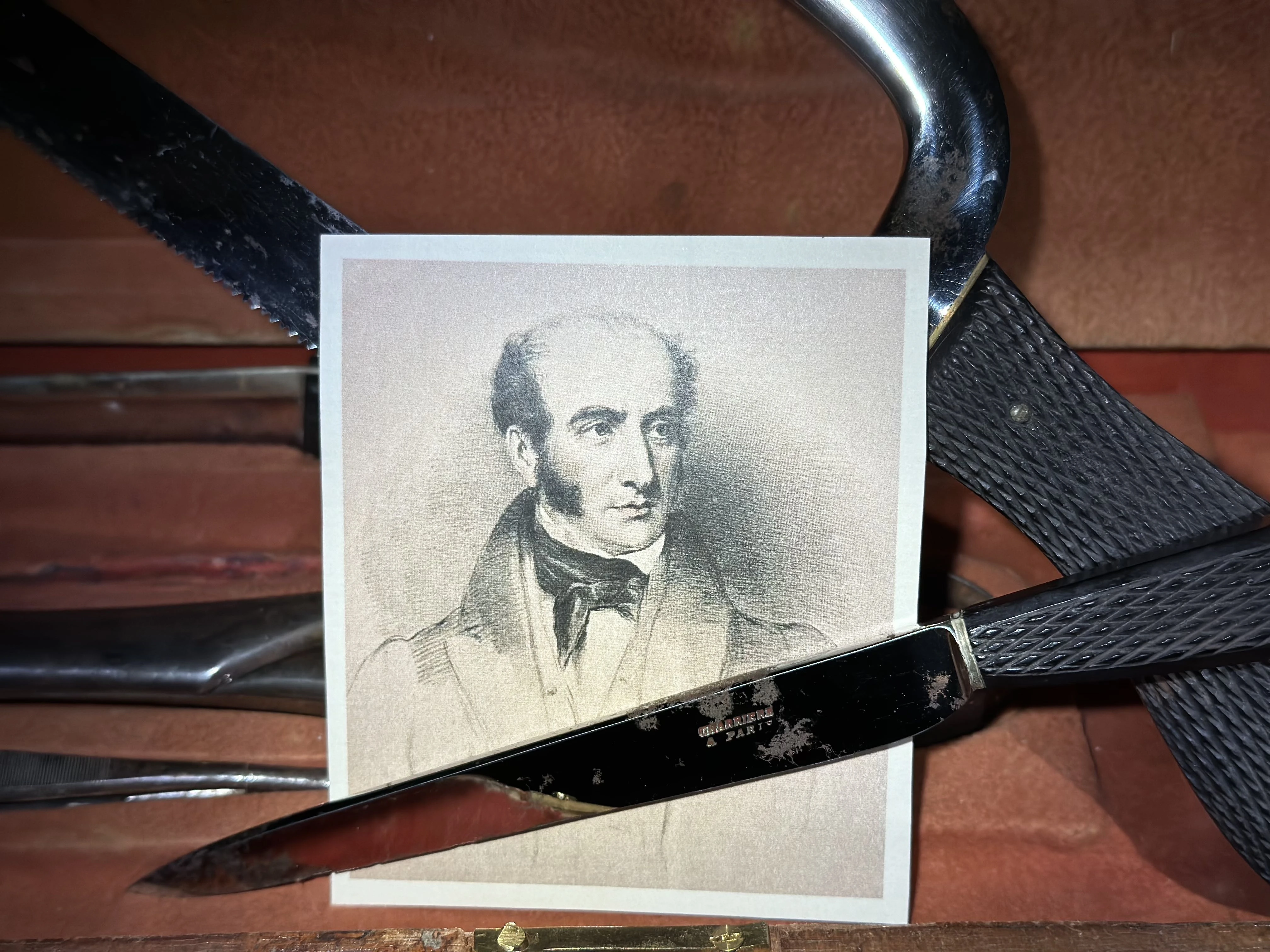
France, Paris
The French company Charrière, founded by Joseph-Frédéric-Benoêt Charrière in the early 19th century, stands as a testament to innovation in medical instrument manufacturing. Born in 1803 in Switzerland, Charrière moved to Paris as a teenager and eventually took over his mentor's cutlery workshop. He became renowned for producing high-quality surgical instruments, notably in lithotripsy and anesthesia. Charrière's technical skill, creativity, and eagerness to learn from surgeons directly influenced his designs. He is also credited with creating the 'Charrière scale,' a measurement standard for medical instruments (also known as 'French gauge'). After his death the company worked under the name Maison Collin till 1957 when it was taken over by Maison Gentile. Charrière's legacy in medical technology endures, symbolizing groundbreaking advancements in healthcare tools.

France, Paris
Maison Lüer was founded in Paris in 1837 by Georg Wilhelm Amatus Lüer (1802–1883), a German-born craftsman. The company gaining renown for precision surgical instruments, initially in ophthalmology and later expanding into other specialties. His son-in-law Hermann Wülfing-Lüer further developed the firm after, patenting an innovative all-glass syringe in 1895, designed for aseptic procedures and resistant to high-temperature sterilization. This syringe, known as "Luer-syringe" featured a precisely ground barrel and plunger, eliminating the need for gaskets. Many surgical tools still bear the Lüer name, and his legacy endures through standardized syringe connections, known for their safety, simplicity, and wide compatibility.
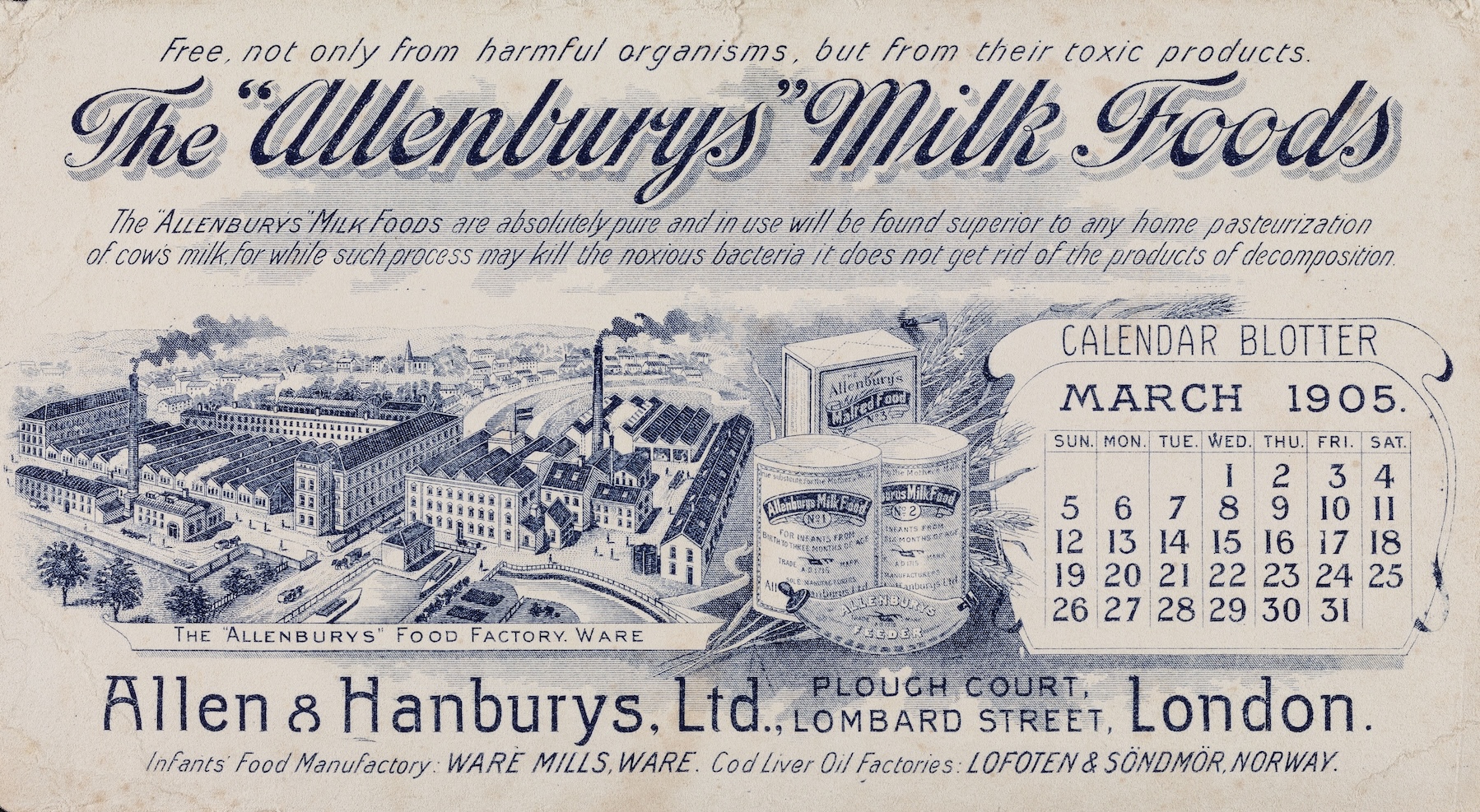
England, London
The Allen & Hanburys Ltd., is a distinguished pharmaceutical, baby food and medical devices company. It was founded in 1715 by Silvanus Bevan, a Welsh apothecary and Quaker, as Plough Court Pharmacy at Plough Court, Lombard Street, London. Later Allen and Hanbury families expanded its operations and in the beginning of 20th century it was leading manufacturer of infant foods, malt preparations, and medicated pastilles. Later it focused on research, analytical control, and the production of galenical preparations, pills, tablets, and surgical instruments, including stainless steel operating tables and baby scales. In 1958, Allen & Hanburys was acquired by Glaxo Laboratories Ltd., which later became part of GlaxoSmithKline (GSK). The Allen & Hanburys name continued as GSK's specialist respiratory division until it was phased out in 2013.
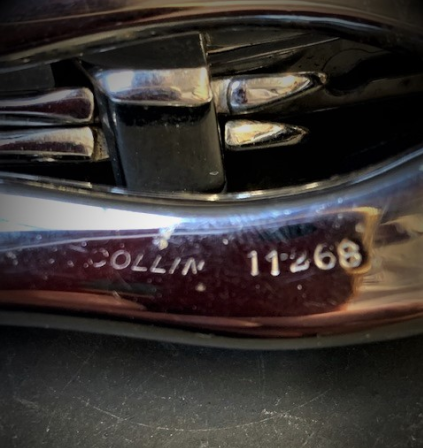
France, Paris
The French company Maison Collin was organized as a successor of the famous Maison Charrière, founded by Joseph-Frédéric-Benoît Charrière in the early 19th century. Anatole Pierre Urbain Louis Colline (1831-1923) and Louis-Apollinaire Robert bought the Charrière firm on May 19, 1866. Robert left the company at 1876. Address of Maison Collin was 60 rue Mazarine, Paris. The company worked under the name Maison Collin till 1957 when it was taken over by Maison Gentile.

France, Paris
Maison Gentile was founded in 1891 by Pierre Gentile. Address: 49 rue Saint-André-des-arts, Paris. The founder, Pierre Gentile, was trained in the Galante workshops. The company was making metal and "caoutchouc" (rubber) instruments. Maison Gentile acquired Maison Collin (former Maison Charrière) in 1957. It closed its doors permanently in 1972.
MUSEUM
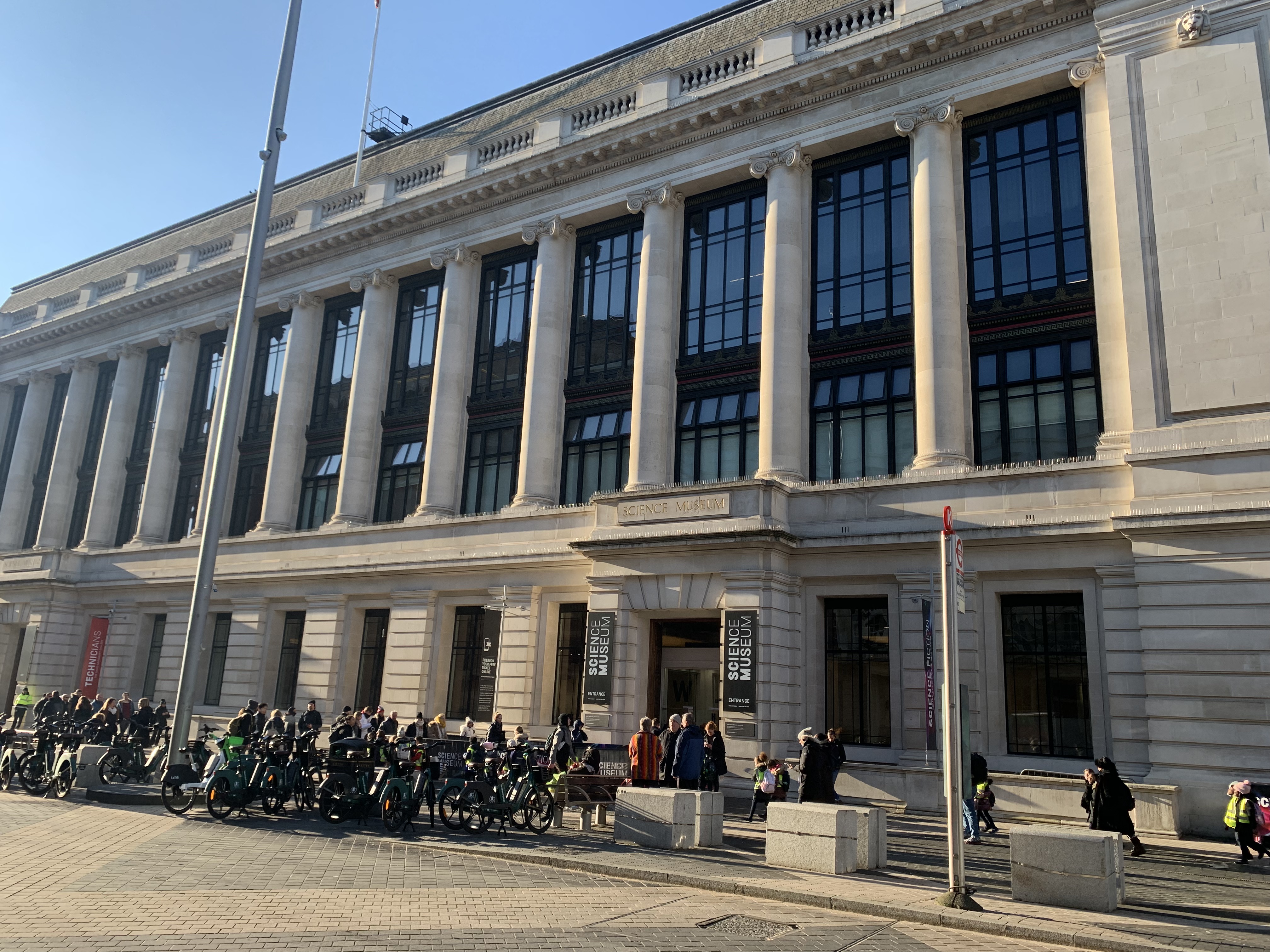
England, London
The Science Museum in London hosts one of the world’s largest medical collections, born from Sir Henry Wellcome’s vision to preserve the history of healing through objects. The modern Wellcome Galleries display over 3,000 items—from Fleming’s penicillin mould and the first MRI scanner to early prosthetics and surgical robots. Blending science, history, and ethics, the galleries engage millions of visitors yearly, while the digital catalogue and ongoing acquisitions ensure global educational and research impact.
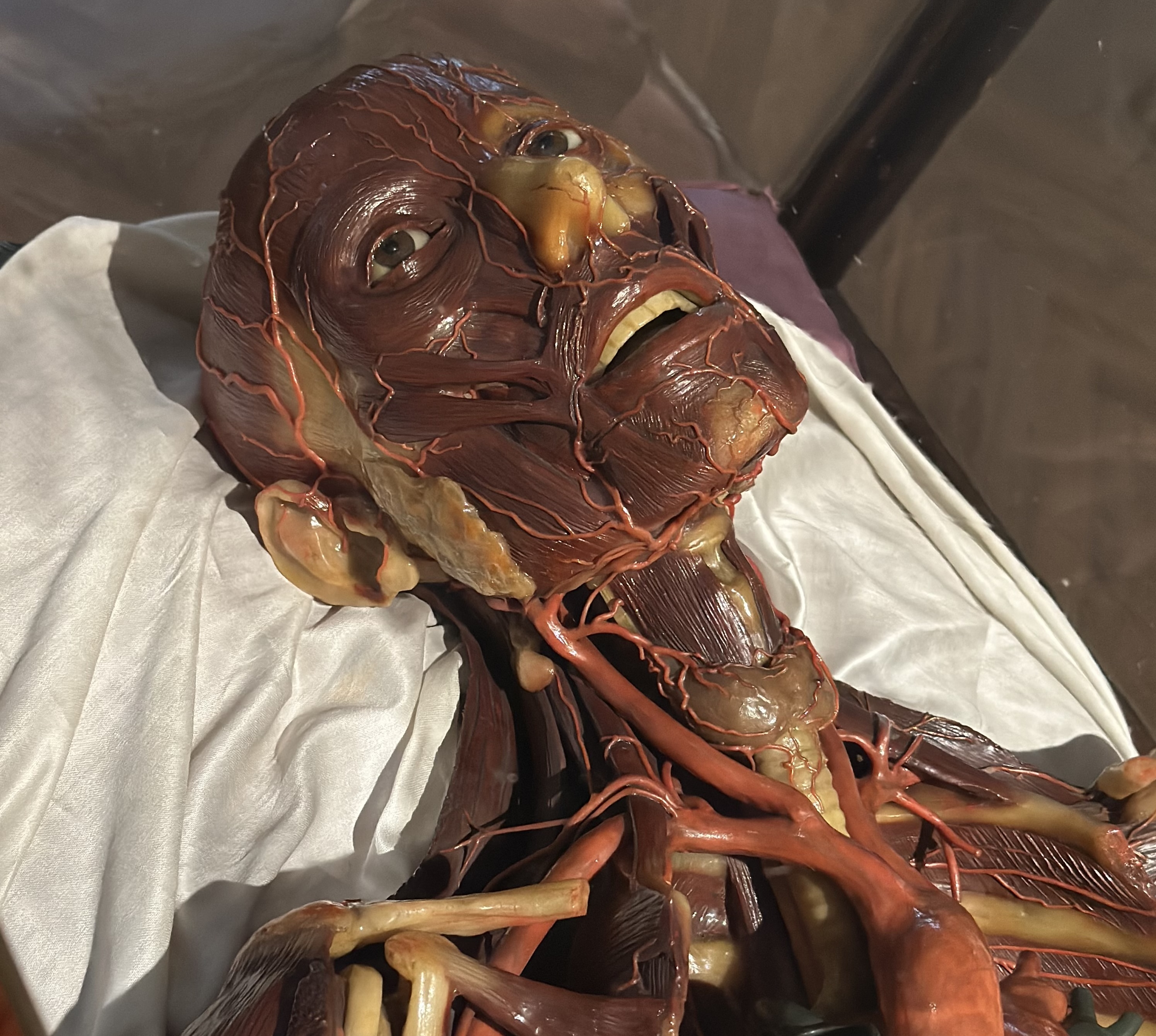
Austria, Vienna
The Josephinum in Vienna is a renowned medical history museum situated in the historical building of the Medical-Surgical Joseph's Academy established in 1785 under Joseph II, Holy Roman Emperor. Today, the museum houses the collections of the Medical University of Vienna, celebrated for its one of the world's largest anatomical wax models collection, which were crafted between 1784 and 1786 by Florence masters including renowned Clemente Susini. These models provide detailed insights into human anatomy and have been pivotal in medical education. After comprehensive renovations, the Josephinum reopened its doors in September 2022, offering visitors a blend of historical artifacts and modern exhibitions that chronicle over 650 years of medical history.
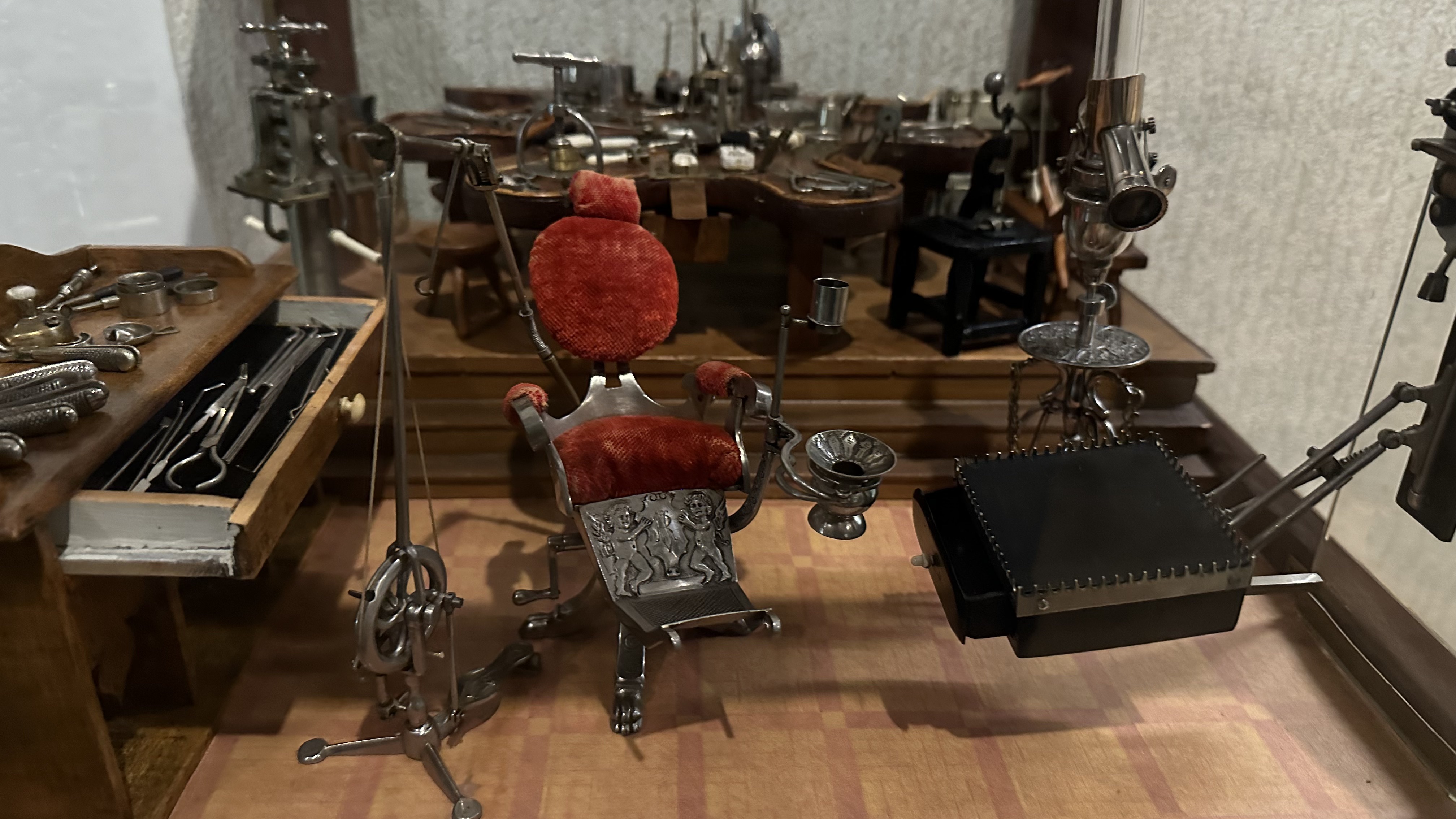
Hungary, Budapest
The Hungarian people are proud of Ignaz Philipp Semmelweis (1818–1865), born in Pest to a catholic German family, the discoverer of the cause of childbed fever – fatal infectious complications in women in labor, and introduced effective measures of it's prevention in 1846. In his honour, the building where he was born in 1818 now houses a museum of the history of medicine bearing his name, which tells not only about Dr. Semmelweis, but also provides a multifaceted illustration of the main milestones in the development of European and world medicine. The remarkable permanent exhibition is complemented by regularly updated temporary exhibitions.
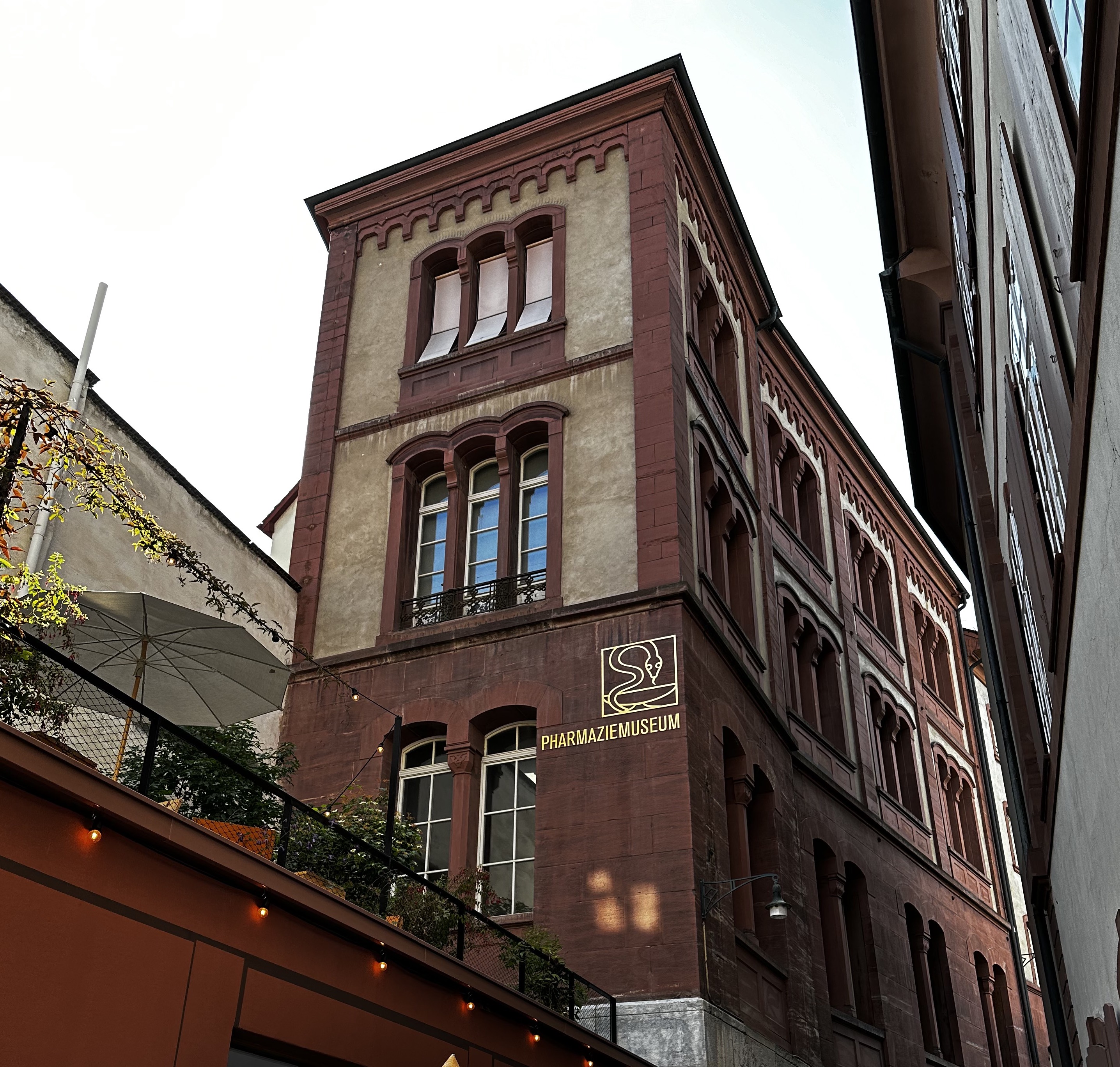
Switzerland, Basel
The Pharmacy Museum of the University of Basel (Pharmaziemuseum Universität Basel) is one of the largest and most important collections of historical pharmaceutical artifacts in the world, the only one of its kind in Switzerland. Its collection includes apothecary ceramics, fully preserved apothecary furniture, an alchemical laboratory, mortars, traveling apothecaries and surgical instruments, medical books, historical medicines and devices related to drug production. Museum is located in the heart of Basel's old town in the Zum Vorderen Sessel building, first mentioned in 1316. Over time, it has hosted notable figures such as Johann Amerbach, Johann Frobenius, Erasmus of Rotterdam, and Hans Holbein the Younger. In 1526-1527, the renowned Theophrastus von Hohenheim (Paracelsius) worked here, and his famulus Johannes Oporinus who later published Andreas Vesalius' groundbreaking anatomy book De fabrica corporis humani as well as works of Paracelsius.
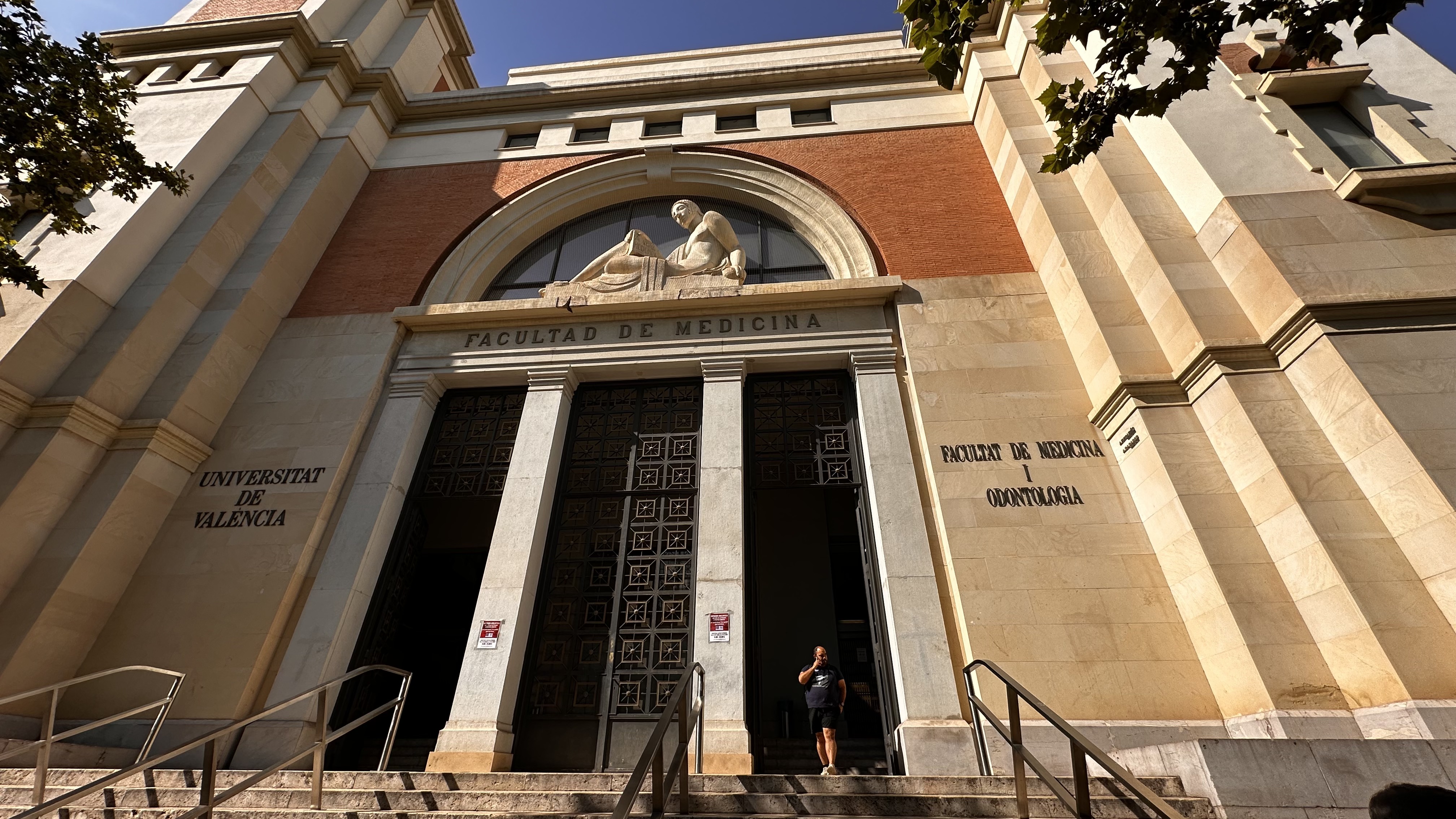
Spain, Valencia
Scientific and Medical Collection of the University of Valencia is located in the great hall on the second floor of the Faculty of Medicine and Dentistry of the University of Valencia, open to the public from Monday to Friday from 10:00 to 20:00
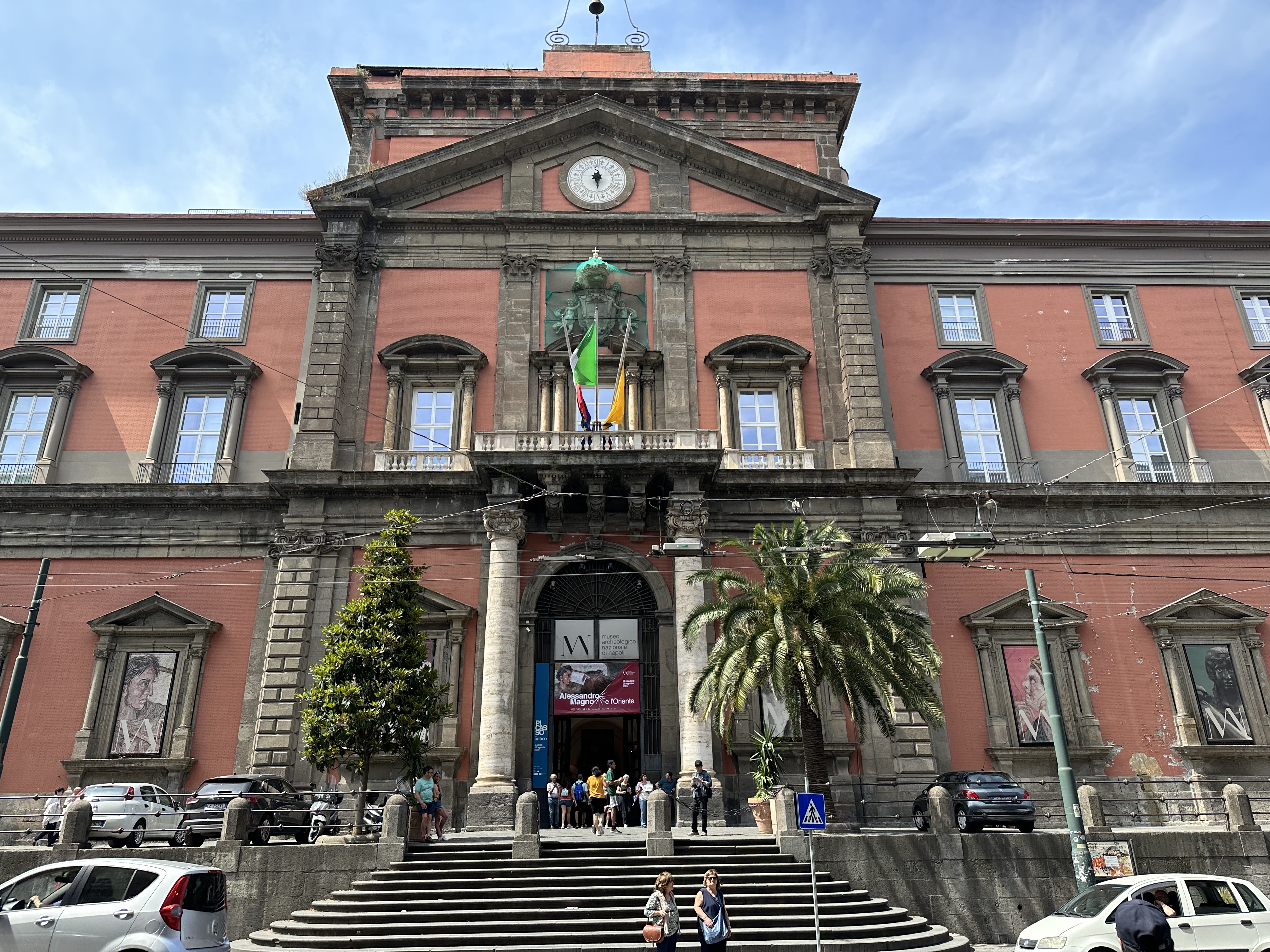
Italy, Naples
Museo Archeologico Nazionale di Napoli (National Archeological Museum of Neapel) holds a significant collection of medical and surgical instruments from ancient Rome recovered from the ruins of Pompeii and Herculaneum, destroyed by the eruption of Mount Vesuvius in 79 AD.
Articles
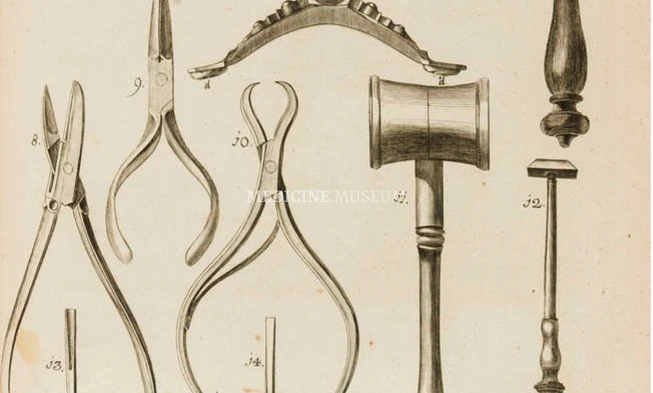
Establishing the publication date of a medical trade catalogs is not always trivial. Many medical instrument manufacturers did without catalogs for many years – there was simply no need for them. Then, when the first trade catalogs of medical and surgical instruments appeared, they often omitted the date of their publications. There are several indications that can be used to determine the approximate year of publication of catalogs, which are discussed in this article.
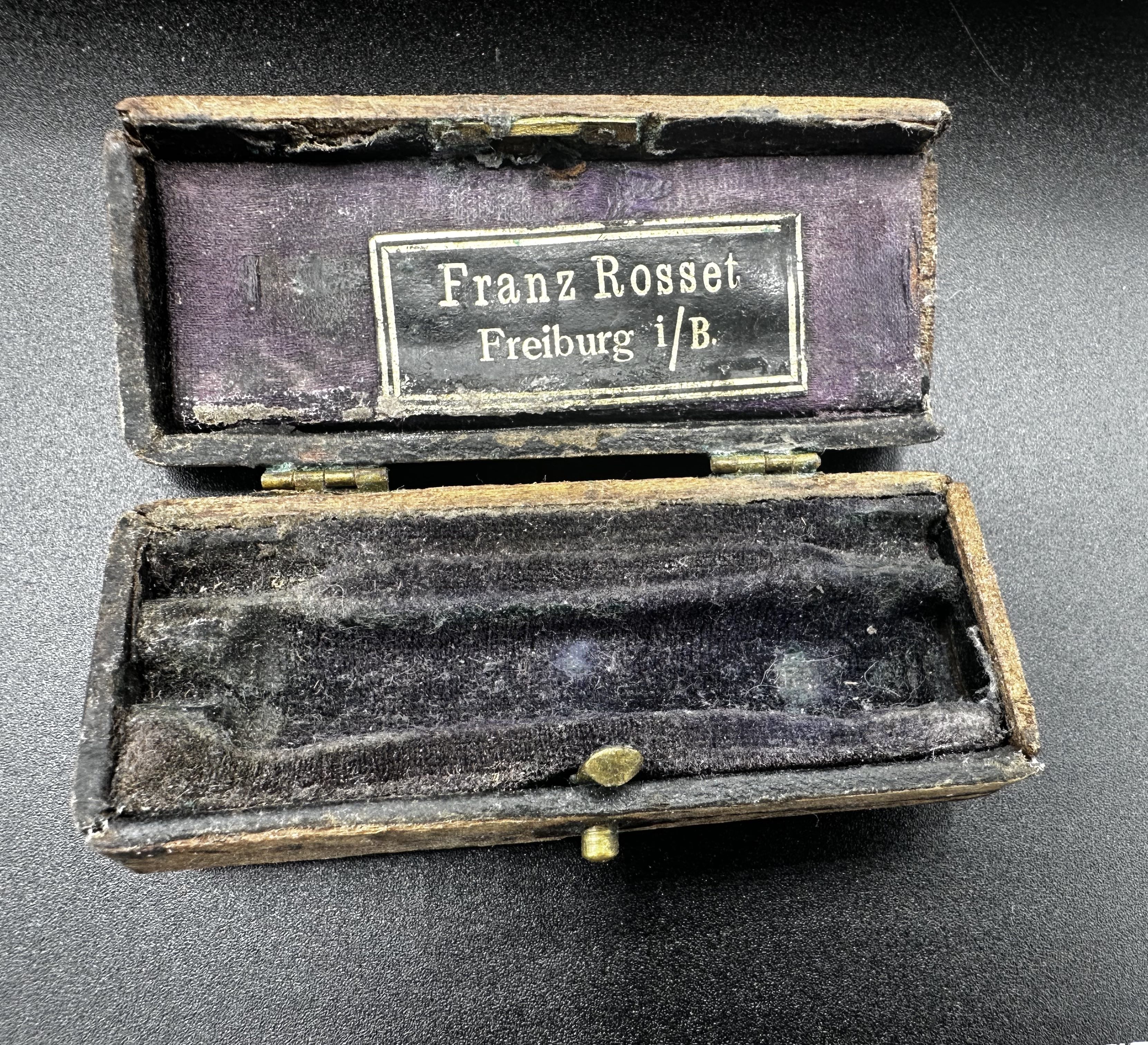
In the world of collecting antiques of medical instruments are often graded based on their condition. The ratings like C1, C2, and C3 are used to indicate the state of preservation and the amount of wear or damage an item has sustained over time. C1 – excellent condition, with minimal signs of wear or use and retains most of its original features and functionality. C2 – good condition but may show more evident signs of wear or aging. C3 – fair or poor condition with noticeable damage or significant signs of wear.